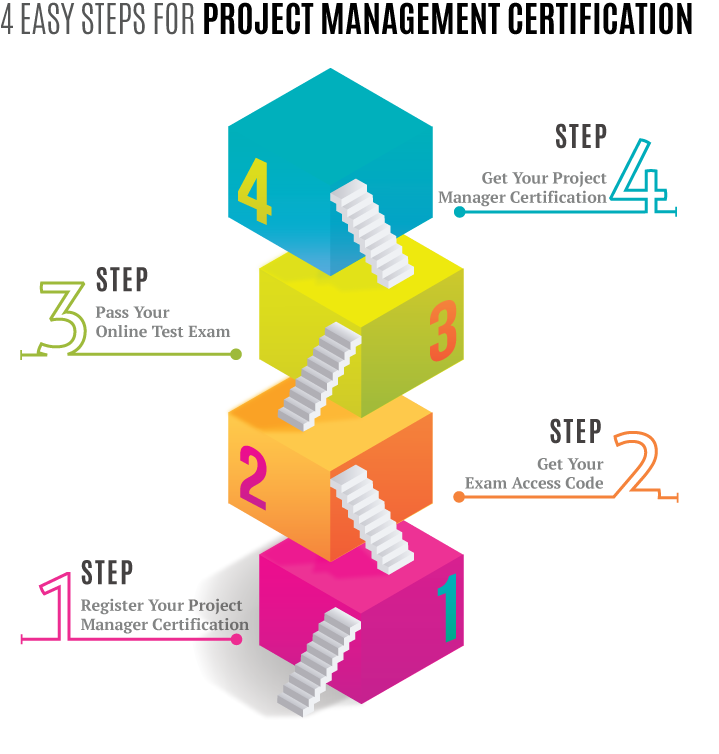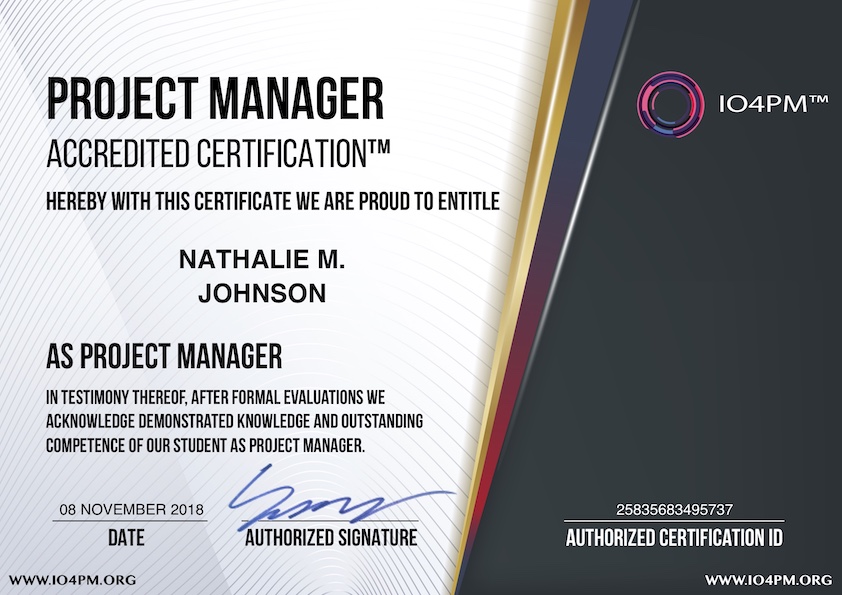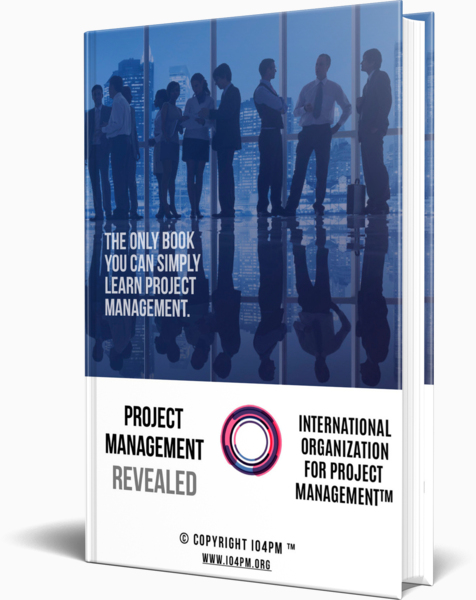Cost Management
Time Management and Cost Management are strongly connected. Many of the topics covered in Cost Management are covered in Time Management as well.
In Time Management chapter we studied the creation of work packages. These work packages were further divided into activities. In multiple projects, cost estimates are created basis these activities. However, in large projects, cost estimates are created at control account level. This level will be equal to a work package level or higher than that.
COST MANAGEMENT PLAN
Though the Cost Management Plan is a required part of Project Management Plan, unlike time and scope management, it is not listed as a part of formally defined cost management process. The Develop Project management Plan in Integration Management involves creation of the cost management plan. It is important to note that the step of creating the cost management plan exists irrespective of where it is created. Cost Management Plan focuses on:
- Planning cost for the project
- Managing project to the cost
- Control cost
- Manage cost variances
Cost management plan forms a part of project management plan. Like other project management plans, even cost management plans requires proactive thinking.
Some important steps involved in cost management plan are:
- The way in which the cost estimates should be stated
- Cost estimates accuracy levels
- Instructions for identifying, tracking and reporting cost performance
- Reporting formats
- Bifurcation and definitions of direct and indirect costs
- Maximum cap for cost expenditure
- Change control procedures required for cost changes
Maximum cap for cost expenditure allows project manager and members to allow variation for cost. As the cost increases beyond the ceiling provided, actions should be taken to control it. These ceiling numbers (maximum cap) are proactively thought through by the project manager in the cost management planning stage.
LIFE CYCLE COSTING
Life cycle costing is taking into consideration of the whole life of the product, and not just the cost of the project.
For example, a product costs $50,000 which has a very low maintenance cost ($5000) over its life period. An alternate product is available for $38,000 however, has higher maintenance cost amounting to $50,000 over the product’s life. As a project manager, would you prefer reducing the cost of the project by saving $12,000 (by buying the alternate product)? – remember, this increases the maintenance cost for the company by $45,000. Or would you take into consideration the entire life cycle costing of the product and forgo $12,000 for a future saving of $45,000 for the company?
VALUE ANALYSIS
Value analysis focuses on decreasing cost of the project without any degradation in scope and performance levels. A systematic identification of various functions, assignment of values to those functions and identifications of less costly resources and activities to be performed maintaining the performance levels is done in value analysis. Value Analysis concurs with value engineering.
COST RISK
Any risk related to cost such as procurement risk, cost management risk is termed as cost risk. This risk is not just covered in risk management and requires to be covered in all phases of the project.
ESTIMATE COSTS
This process is related to estimating cost for each identified activity of the project.
The costs required to complete the project involve:
- Quality efforts
- Risk efforts
- Project management activities
- Resources
- Direct and Indirect costs
- Overhead costs
- Others
TYPES OF COST
There are two types of cost:
- Variable cost: As understood by the name, these costs vary with the amount of work being done. For example, cost of raw material, labor wages, etc.
- Fixed cost: These are non-variable costs. These costs are fixed and includes set up cost, working capital, lease (rent), etc.
A cost can be direct or indirect cost:
- Direct Costs: The costs that can be directly attributed to the work done in the project is considered as Direct Costs. Example include: travel and entertainment expenses, stationary cost, labor salaries, etc.
- Indirect Costs: The overhead items or costs incurred that cannot be apportioned to a specific project or activity and can be used for multiple projects are termed as Indirect costs.
INPUTS TO ESTIMATING COSTS
Following are the inputs that help in estimating costs better and quicker:
- Scope Baseline: Scope baseline includes the project scope statement, WBS and WBS dictionary. It helps in allowing the project manager to know what is in-scope and what is out-of-scope.
- Project Schedule: A schedule is required before a budget is created. The project schedule contains the list of activities, the allocated resources and the time when work will occur. Cost expenditure can be controlled if the project team is aware of the timing on when to buy the product. The other way that it can be controlled is when project expenditures are made in a time-phased manner. Thus, a schedule can affect cost. Likewise, cost can also affect schedule. If an activity is to be executed on a project when the cost of purchasing the raw material is very high, the activity may need to be pre-poned or post-poned for the reasons to accommodate the surge in price.
- Human Resources Plan: The system to reward project members, rates of labor required and number of resources (individuals) required for the project and their cost are arrived at by the human resource plan. This plan enables the project manager to keep the resources motivated to work achieving savings and still ensuring the cost of the project is controlled.
- Risk Register: Risk is an effective contributor to reduce time and money associated with the project. Cost is required to the work required to manage and control risks. These costs can also lead to more risks such as cost risks. Thus, risk is both an input and output of Estimate Cost process.
- istorical Records and Lessons Learned: Historical records from past projects are extremely helpful to make the cost calculations and the estimates easier. The templates provided by these records help in executing these efforts faster and quicker.
- Project Management Costs: Project management efforts also require costs. The expense of the project manager, status reports, change analysis, execution, etc are included in these costs.
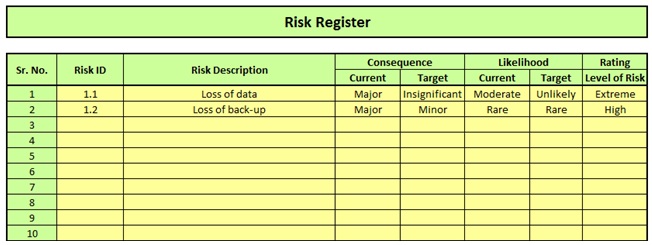
Risk Register
HOW IS ESTIMATING DONE?
Costs can be estimated using the methods that we have already learned in the Time Management Chapter i.e. One-point estimating, analogous estimating, parametric estimating, and three-point (PERT) estimating. Another method of estimation that we will now study is bottom-up estimating technique.
BOTTOM-UP ESTIMATING
A project is finely distributed in the form of activities and work packages. The technique of bottom-up estimating involves estimation of costs involved at each activity or work package, rolling it up into control units and then finally to the overall project estimate. This is another reason why a WBS should be well created by the project team.
The process of creating estimates involves the following items:
PROJECT MANAGEMENT SOFTWARE
Project management software can help in speeding up the calculations required to estimate costs. These calculations could include direct, indirect, overhead, fixed cost calculations for several hundred activities.
DETERMINING RESOURCE COST RATES
Resources can be internal human resources, vendors, consultants, suppliers, external technicians, among others. Project managers must have a know-how of the rate involved for the resource cost.
RESERVE ANALYSIS
Reserve analysis involves identification of activities which have significant risks and determination of the total efforts (time and money) required to manage these risks if they occur. There are two types of risks: Known and Unknown risks. Contingency reserves deal with known risks. Management reserves deal with unknown risks. Padding should be avoided when doing a reserve analysis.
COST OF QUALITY
Quality efforts are required for the project. The amount of money added due to these efforts are bifurcated as Cost of Quality.
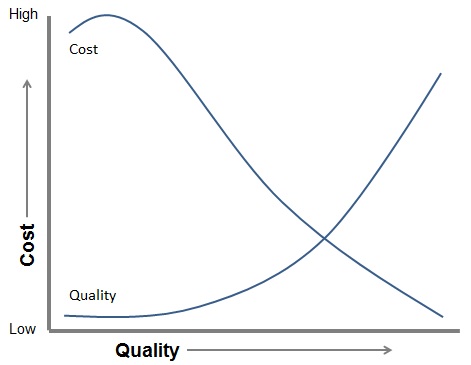
Cost of Quality (CoQ)
ACCURACY OF ESTIMATES
Estimation of Costs is an iterative process. Costs estimated during early stages of the project have lesser accuracy and the ones estimated at later stages have higher accuracy. Cost estimation should be made by the project manager in the form of ranges. Thus, the ranges will be higher at the start of the project and will narrow down as project progresses.
There are different types of ranges for different scenarios i.e. for preliminary cost estimation, the range will vary, for cost estimation during the conceptualization stage the range will vary and similarly for feasibility and final estimation, the ranges will vary. The ranges will narrow down from broad level to lower levels. Some of the techniques are described:
- ROUGH ORDER OF MAGNITUDE (ROM) ESTIMATE: This estimate is generally made during project initiation phase. A typical range of estimates for ROM is +/- 50%, however, this percentage will vary depending on how much is known by the project team about the project when creating estimates.
- BUDGET ESTIMATES: Done during the project planning stage. The ranges varies from -10% to +25%.
- DEFINITIVE ESTIMATE: It is a more refined project cost estimate. A few project managers use a range of +/- 10% and others use -5% to +10% of range from actual.
When the Estimate Cost process is completed, it results into:
- Activity Cost Estimates with the explanation of how these costs were derived
- Changes or updates to other project management documents such as risk register, change control register, among others
DETERMINE BUDGET
In the process, the project manager determines the amount of funds the organization needs to have available for the project by calculating the total cost of the project. This calculation leads to creation of a Budget.
A project manager MUST perform risk management activities and include reserves (contingency and management) when estimating the total cost of the project. The cost budget is cost baseline plus management reserves. The cost budget indicates the total money the organization should have allocated for the project.
For creation of a budget, the process of cost aggregation is used. In this concept, the activity costs are rolled up into work package costs, work package costs are then rolled up into control account costs and control account costs are finally rolled up into project costs. Contingency cost is added to the cost baseline. Management reserves are added as a final step.
Comparison of cost baseline and cost budget is done by the project manager to parametric estimates, expert judgment or historical records for a sanity check. If there are significant variances between the reference data and project estimates, the project manager needs to investigate and ensure that the estimates are correct.
Checking of the cash flow is the next thing to do. There could be situations where the funding is not available when it is required by the project. Hence, all the activities need to be planned in a time-phased manner and may be shown as an S-curve.
The next step is to identify any constraints in the project charter. Project manager needs to reconcile the cost baseline and cost budget with these constraints. The reconciliation is done as a part of Integration Management process. If the project estimate exceeds the constraints, the project manager must meet the stakeholders and explain the reasons of exceeding the constraints and also share options to reduce project costs. Else, an unrealistic budget is made available and it is considered to be a project manager’s fault.
The output of Determine Budget process is Cost Baseline. The efforts involved in determining budget process may lead to changes in other project management documents.
CONTROL COSTS
Control costs process is focused on controlling cost of the project as described in any other knowledge area in the control section.
A few activities that could be helpful for controlling costs include:
- Use of cost management plan; a cost management plan helps the project manager plan for controlling cost of the project.
- Use of Organizational process assets; Organization policies, procedures, tools or reporting formats related to controlling costs can be used.
- Prevention of unnecessary changes; this is an important activity. Prevention process involves identification the root-causes where high costs are involved and mitigating them.
- Measure costs; another important factor that the project manager must be completely involved in throughout the lifecycle of the project is measuring the project cost for variation from the baseline. This triggers either into corrective or preventive actions.
PROGRESS REPORTING
The project manager should avoid usage of guestimates for reporting progress. One of the following techniques can be deployed by the project manager:
- 50/50 Rule: An activity is considered 50% complete when it begins and gets credit for the rest 50% only when it is completed.
- 20/80 Rule: An activity is considered 20% complete when it begins and gets credit for the rest 80% only when it is completed.
- 0/100 Rule: An activity is considered 0% complete when it begins and gets credit for the 100% only when it is completed.
EARNED VALUE MEASUREMENT
The benefits of Earned Value include:
- Provides the ability to the project manager to track the project cost very well
- Allows the project manager to look at other more productive aspects of the project
- Does not allow any space for guestimation of project progress numbers
The performance measurement baseline is a combination of scope, schedule and cost baselines. Earned value measures project performance against scope, schedule and cost baselines (performance measurement baseline). Earned value measurement is better, because it integrates cost, time and the work done (or scope) and can be used to forecast future performance and project completion dates and costs.
 IO4PM™
IO4PM™

